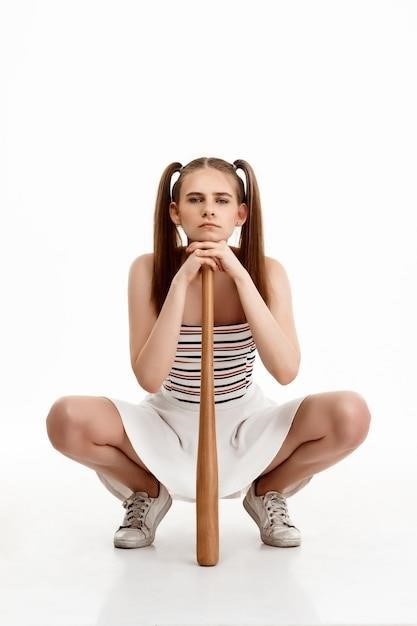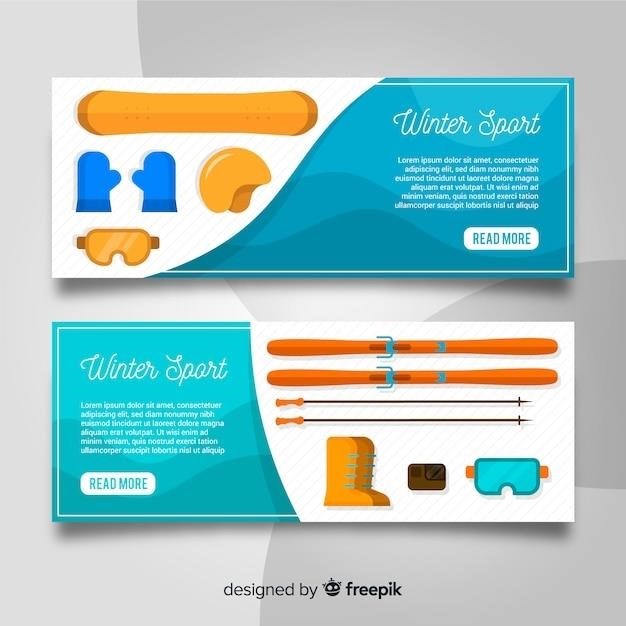junior cricket bat size guide

junior cricket bat size guide
Selecting the perfect junior cricket bat is crucial for skill development. Size is determined by the child’s height and age‚ typically ranging from size 0 to size 6. Consider weight and material (English willow is generally lighter) for optimal performance. Consult manufacturer size charts for accurate guidance.
Choosing the Right Bat Size
Choosing the correct junior cricket bat size is paramount for a young cricketer’s development. A bat that’s too heavy or long hinders proper technique and can lead to frustration. Conversely‚ a well-fitted bat empowers confident stroke play and enhances skill acquisition. The primary factor in determining size is the child’s height; however‚ age is also a useful guide. Manufacturers provide size charts correlating height and age to bat size (typically ranging from 0 to 6). Always prioritize a bat that feels comfortable and manageable in the child’s hands. Avoid bats that feel overly cumbersome or unwieldy. Remember‚ the goal is to foster enjoyment and build a solid foundation of technique‚ not to overwhelm the young player with an ill-suited piece of equipment. The right bat size promotes positive experiences and encourages continued participation in the sport.
Size Chart Based on Height
While precise measurements vary slightly between manufacturers‚ a general size chart based on height offers a helpful starting point for selecting a junior cricket bat. Remember‚ these are approximations‚ and individual children may vary. Always allow the child to hold and swing the bat to ensure a comfortable and manageable feel. A common size chart might include⁚ Size 0 for children up to 4 feet tall (ages 4-5)‚ Size 1 for 4ft to 4ft 3in (ages 5-6)‚ Size 2 for 4ft 3in to 4ft 6in (ages 6-7)‚ Size 3 for 4ft 6in to 4ft 9in (ages 7-8)‚ Size 4 for 4ft 9in to 4ft 11in (ages 8-9)‚ Size 5 for 4ft 11in to 5ft 2in (ages 9-10)‚ and Size 6 for 5ft 2in and above (ages 10+). These age ranges are guidelines; physical development varies considerably among children. Prioritize a comfortable fit over strict adherence to age-based recommendations. Consider the child’s strength and ability to comfortably wield the bat. Consult individual manufacturer size guides for the most accurate measurements.
Size 0 to Size 6⁚ A Detailed Breakdown
Junior cricket bats are typically categorized into sizes 0 through 6‚ each corresponding to a specific height and age range. Size 0 bats are the smallest‚ designed for the youngest players‚ usually aged 4-5. As the numbers increase‚ so does the bat’s size and weight‚ accommodating the growth and strength of the child. Size 1 is suitable for slightly taller children (ages 5-6)‚ followed by Size 2 (ages 6-7)‚ Size 3 (ages 7-8)‚ Size 4 (ages 8-9)‚ Size 5 (ages 9-10)‚ and Size 6 (ages 10+). However‚ these are just guidelines. A child’s height and strength are key factors. A shorter‚ stronger child might need a larger bat than indicated by their age. Conversely‚ a taller‚ less physically developed child may require a smaller size. The best approach is to allow the child to try out different sizes and weights to find the most comfortable and manageable option. The ideal bat should feel balanced and not too heavy for the child to swing easily and repeatedly.

Bat Sizes and Age Recommendations
While age is a factor in choosing a junior cricket bat‚ it’s not the sole determinant. Height is equally important. A size chart correlating height and bat size offers a more accurate guide than age alone. Generally‚ Size 0 bats are for children up to 4 feet tall (ages 4-5). Size 1 suits those around 4-4.3 feet (ages 5-6). Sizes 2‚ 3‚ 4‚ 5‚ and 6 progressively accommodate increasing heights and ages‚ typically up to around age 10 or 11. However‚ individual growth variations exist. A smaller‚ stronger child might use a larger bat‚ and a taller‚ less developed child may need a smaller one. Always prioritize a comfortable and manageable weight. The child should be able to swing the bat freely without strain. The bat shouldn’t be too heavy or cumbersome‚ potentially hindering their technique and enjoyment of the game. Observe the child’s ease and control when swinging different bat sizes to make the most informed decision.
Factors Affecting Bat Weight

Several factors influence the weight of a junior cricket bat‚ beyond the simple size designation. The type of willow used significantly impacts weight; English willow bats are generally lighter than Kashmir willow bats‚ offering a noticeable difference in feel and swing. The bat’s construction and manufacturing process also play a role. A bat with a thicker blade or a longer handle will inherently weigh more. The overall balance of the bat is crucial; a well-balanced bat feels lighter and easier to control‚ even if the overall weight is slightly higher. Finally‚ the age and strength of the young cricketer are key considerations. A heavier bat can be detrimental to a child’s technique and physical development‚ leading to fatigue and poor stroke mechanics. Conversely‚ a bat that is too light may lack the power needed for effective shots. The ideal weight should allow for comfortable and controlled swings‚ fostering proper technique and building confidence.
Popular Bat Brands and Their Size Guides
Several reputable brands cater to junior cricketers‚ each with its own size guide. Gray-Nicolls‚ a prominent name‚ offers a range of junior bats (EVO E Four‚ EVO E Five‚ Momentum M Three) with detailed size specifications often linked to age and height. Kookaburra‚ another well-known brand‚ provides size charts based on player height‚ often categorized as Junior‚ Youth‚ Small Adult‚ and Adult. Gunn & Moore‚ SS‚ New Balance‚ and DSC are other popular manufacturers‚ all offering junior bats. It’s important to note that while general size guides exist‚ individual brand specifications may vary. Always consult the specific brand’s size chart for the most accurate information before purchasing. These charts typically correlate bat size (0-6 for juniors) with height ranges to assist in selecting the appropriate bat for a young player’s physique and skill level. Checking multiple brand guides can provide a broader perspective and help ensure the best fit.
Recommended Bat Weights for Juniors
Determining the ideal weight for a junior cricket bat is crucial for their development and enjoyment of the game. A bat that’s too heavy can hinder their technique and lead to frustration‚ while one that’s too light might lack the power needed for effective shots. The weight is usually expressed in pounds and ounces (lbs/oz). A general guideline suggests that younger players (Size 0-2) should use lighter bats‚ typically ranging from 1 lb 13 oz to 2 lb 1 oz. As players grow and their strength increases (Size 3-6)‚ the weight can gradually increase to 2 lb 3 oz to 2 lb 5 oz. However‚ these are just estimations. A child’s individual strength and physical development should be the primary consideration. Factors like bat material (English willow is usually lighter than Kashmir willow) also affect the weight. It’s always best to allow a junior cricketer to test the weight of a bat before purchase to ensure a comfortable and effective swing. Prioritize a bat that feels manageable and allows for proper technique‚ rather than focusing solely on the numerical weight.
Impact of Bat Material on Weight
The material a junior cricket bat is made from significantly influences its weight. English willow is a popular choice for its lightweight properties and excellent performance characteristics. Bats crafted from English willow generally offer a lighter feel‚ making them easier for young players to handle and swing effectively. This facilitates the development of proper technique and prevents fatigue during extended play. In contrast‚ Kashmir willow‚ while offering durability‚ tends to produce heavier bats. The denser nature of Kashmir willow results in a bat that may be more challenging for a junior player to manage‚ potentially affecting their swing speed and overall performance. The difference in weight between bats made from English and Kashmir willow can be noticeable‚ even within the same size. Therefore‚ when selecting a bat‚ parents and coaches should consider the player’s strength and age‚ and choose a material that aligns with their capabilities. A lighter bat made from English willow could be ideal for younger or less physically developed players‚ while a stronger child might be able to handle a heavier bat made from Kashmir willow. Ultimately‚ the choice depends on the individual player’s needs and preferences.
Maintaining Your Junior Cricket Bat
Proper maintenance is key to extending the lifespan and performance of a junior cricket bat. After each use‚ carefully wipe down the bat with a clean‚ dry cloth to remove dirt‚ grass‚ and sweat. This prevents the accumulation of grime that can damage the wood over time. Avoid leaving the bat in direct sunlight or extreme temperatures‚ as these conditions can cause the wood to warp or crack. Store the bat in a cool‚ dry place‚ ideally in a bat cover or protective case. Regular oiling with a high-quality bat oil helps to moisturize the wood‚ preventing it from drying out and becoming brittle. Apply the oil sparingly and evenly‚ allowing it to soak in before wiping away any excess. Avoid using harsh chemicals or abrasive cleaners‚ as these can damage the bat’s finish. Inspect the bat regularly for any signs of damage‚ such as cracks or splinters. If any damage is found‚ it’s crucial to address it promptly to prevent further issues. Remember‚ a well-maintained bat not only lasts longer but also performs better‚ giving your young cricketer a significant advantage on the field. Following these simple maintenance steps will ensure your junior’s cricket bat remains in top condition for years to come.